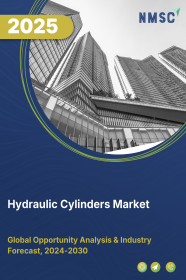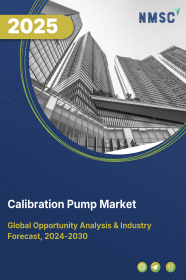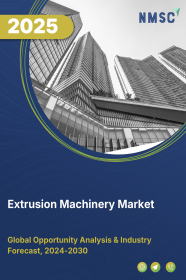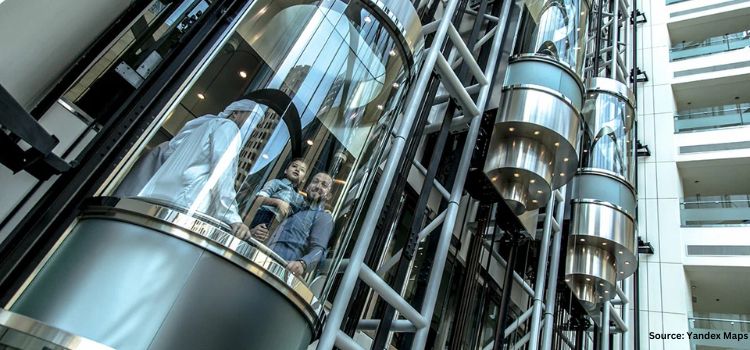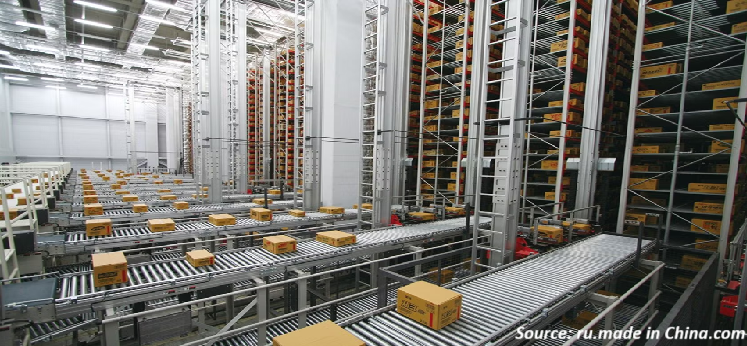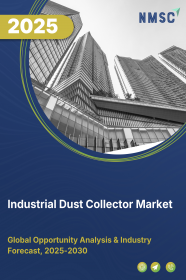
Industrial Dust Collector Market by Product Type (Baghouse Filters (Woven, Non-Woven), and Others), by Service (Installation Service and Maintenance Service), by Mobility (Portable and Fixed), by Mechanism Type (Dry and Wet), by Cleaning Mechanism (Pulse-jet Cleaning, and Others), by Filter Medium (Polyester and Others), by Distribution Channel (Direct Sales (OEMs), and Others), and by Industry Vertical (Food & Beverage, & Others)– Global Opportunity Analysis and Industry Forecast, 2025-2030
US Tariff Impact on Industrial Dust Collector Market
Trump Tariffs Are Reshaping Global Business
Industrial Dust Collector Market Overview
The global Industrial Dust Collector Market size was valued at USD 8.47 billion in 2024 and is expected to be valued at USD 8.88 billion by the end of 2025. The industry is further predicted to reach USD 11.20 billion by 2030 with a CAGR of 4.8% from 2025 to 2030.
The industrial dust collector market is primarily driven by stringent environmental regulations, growing industrialization, and an increased emphasis on workplace air quality and worker health. However, the high installation and maintenance costs associated with advanced filtration technologies pose a significant restraint, particularly for small and medium-sized enterprises. On the other hand, the market presents promising opportunities through innovations in sustainable and smart dust collection systems, such as IoT-enabled monitoring, energy-efficient designs, and eco-friendly materials, which not only support regulatory compliance but also reduce long-term operational costs.
Stringent Regulations and Workplace Safety Drives the Market Growth
One of the most significant driving forces propelling the industrial dust collector industry is the increasingly stringent industrial regulations and a heightened awareness of workplace safety and environmental protection. Governments worldwide are implementing stricter standards for air emissions and workplace air quality, compelling industries to invest in effective dust collection systems. For instance, various environmental protection agencies mandate specific particulate matter emission limits, forcing manufacturing plants in sectors like cement, pharmaceuticals, and food processing to adopt advanced dust collection technologies to comply with these regulations. This regulatory push directly translates to a higher demand for industrial dust collectors as companies prioritize adherence to legal requirements and seek to mitigate potential fines and legal repercussions.
Rising Industrialization and Manufacturing Fuels the Market Growth
The continuous rise in industrialization and manufacturing activities across diverse sectors globally serves as another major catalyst for the industrial dust collector industry. As economies grow and production volumes increase, the generation of dust and particulate matter as byproducts of industrial processes also escalates. This is evident in sectors experiencing rapid expansion, such as construction materials, metalworking, and power generation. The need to control and capture this increased dust necessitates the deployment of industrial dust collectors to maintain a clean and safe working environment and prevent environmental pollution. Consequently, the expansion of industrial activities directly correlates with the growth potential and market size of the dust collection industry.
Emphasis on Worker Health and Air Quality Fuels the Adoption of Industrial Dust Collector
A growing focus on improving air quality within industrial facilities and mitigating health hazards associated with dust exposure is a crucial driving factor in the industrial dust collector industry. Prolonged exposure to airborne dust particles leads to various respiratory illnesses and other health problems for workers. Recognizing these risks, companies are increasingly investing in dust collection systems to protect their employees' health, improve workplace conditions, and enhance overall productivity. Furthermore, concerns about community health and the environmental impact of dust emissions are also pushing industries to adopt effective dust control measures. This proactive approach towards health and safety not only benefits the workforce but also enhances the company's reputation and social responsibility.
High Installation Costs and Affordability Challenges, Hinders the Market Growth
The industrial dust collector industry faces certain restraints, one of which is the high initial investment and ongoing maintenance costs associated with advanced dust collection systems. Implementing sophisticated filtration technologies, especially those incorporating features like smart monitoring and automated cleaning, require a significant capital expenditure. Additionally, regular maintenance, filter replacements, and energy consumption contribute to the operational costs of these systems. These cost considerations sometimes pose a challenge, particularly for small and medium-sized enterprises (SMEs) or industries with tight budgets, potentially slowing down the widespread adoption of more advanced dust collection solutions.
Introduction of Sustainable Dust Collector Creates Future Market Opportunities
The push for innovative and sustainable systems in the industrial dust collector industry is transforming how industries manage air quality and environmental impact. These systems leverage cutting-edge technologies like IoT-enabled sensors, advanced filtration media, and energy-efficient designs to reduce emissions, lower operational costs, and align with global sustainability goals. For instance, Camfil’s Gold Series X-Flo dust collector, introduced in 2023, uses a unique baffle configuration to extend filter life, reducing waste and maintenance needs. Additionally, manufacturers are exploring eco-friendly materials and renewable energy integration, such as solar-powered dust collectors, to minimize carbon footprints. For instance, focus on sustainability is evident in Nederman’s SAVE solution, launched in May 2023, which optimizes energy use while enhancing dust capture efficiency. These innovations not only ensure compliance with stringent regulations but also offer long-term cost savings, driving the market.
Market Segmentations and Scope of the Study
The industrial dust collector industry report is segmented based on product type, service, mobility, mechanism type, cleaning mechanism, filter medium, distribution channel, industry vertical, and region. By product type, the market is categorized into baghouse filters, cartridge dust collectors, wet scrubbers, electrostatic precipitators, and others. Baghouse filters is further divided into including woven and non-woven. Based on service, the market is divided into installation service and maintenance service. By mobility, the market is divided into fixed and portable systems. On the basis of mechanism type, it is segmented into dry and wet systems. By cleaning mechanism, the market includes pulse-jet cleaning, reverse air cleaning, shaker cleaning, continuous cleaning, and others. In terms of filter medium, the segmentation includes polyester, polypropylene, fiberglass, and special materials. By distribution channel, the market is segmented into direct sales through OEMs and indirect sales. Indirect sales is further divided into distributors, wholesalers, and online platforms. In terms of industry vertical, the market includes food and beverage, pharmaceuticals, chemical, mining, construction, automotive, pulp and paper, and others. Regional breakdown and analysis of each of the aforesaid segments include regions comprising North America, Europe, Asia-Pacific, and RoW.
Geographical Analysis
North America’s industrial dust collector industry is driven by strict regulatory frameworks and a diverse industrial base. The U.S., Canada, and Mexico adhere to OSHA and EPA guidelines that mandate dust control in sectors like manufacturing, metalworking, and pharmaceuticals. For example, Donaldson’s iCue Connected Filtration Service, launched in 2024, meets regional demand for smart, IoT-enabled systems, showcasing North America’s focus on technological advancement. Major players like Parker Hannifin and Camfil APC bolster the region’s market presence, while sustained investments in food processing and woodworking ensure consistent demand. Though growth is slower than in Asia-Pacific, North America’s emphasis on compliance and innovation solidifies its position as a market leader.
Europe’s industrial dust collector market thrives on its commitment to sustainability and cutting-edge technology, with Germany, France, and the UK at the forefront. The region’s stringent EU air quality directives drive adoption in industries such as automotive, chemicals, and food and beverage. Innovations like Nederman’s SAVE solution, introduced in 2023, highlight Europe’s focus on energy-efficient dust collection systems that reduce environmental impact. Consumer awareness of pollution, particularly in Germany’s push for advanced air purification, further supports market growth. While Europe’s expansion is more measured compared to Asia-Pacific, its leadership in eco-friendly designs and filtration advancements ensures a strong contribution to the global industry.
Asia-Pacific leads the industrial dust collector market as the fastest-growing region, driven by rapid industrialization and infrastructure development in countries like China and India. China’s steel industry and India’s cement sector heavily rely on dust collectors to manage emissions, supported by increasingly strict government policies on air quality. For instance, Donaldson’s 2024 expansion in Pune, India, targets South Asia’s rising demand for tailored dust collection solutions. Japan and South Korea further enhance growth through adoption of IoT-enabled systems. The region’s shift toward sustainable practices, including reduced coal reliance, amplifies its growth potential, positioning Asia-Pacific as the epicenter of market expansion.
The Rest of the World, including South America and the Middle East & Africa, represents an emerging segment of the industrial dust collector market with significant untapped potential. In South America, Brazil and Argentina drive growth through expanding mining and construction sectors, though regulatory enforcement remains less stringent. In the Middle East & Africa, countries like South Africa and the UAE are increasing investments in dust control as industrial activities grow, spurred by rising environmental awareness. Companies like FLSmidth are strategically targeting these regions to capitalize on evolving regulations and industrial development, making the Rest of the World a promising frontier for future market growth.
Strategic Initiatives and Innovations Adopted by the Key Players
Key players in the global industrial dust collector market, such as Donaldson Company, Inc., Nederman Holding AB, Camfil AB, and Parker Hannifin Corp, are adopting innovative strategies to strengthen their market share and address evolving industry demands, while navigating significant challenges and seizing growth opportunities. Recent developments include Donaldson’s 2024 launch of the iCue Connected Filtration Service, an IoT-enabled system for real-time monitoring, and its new experience center in Pune, India, targeting South Asia’s burgeoning industrial base. Similarly, Nederman’s 2023 SAVE solution enhances energy efficiency, reflecting a broader industry trend toward sustainable, smart technologies. These players are investing heavily in R&D to develop advanced filtration systems, such as Camfil’s Gold Series X-Flo, which extends filter life and reduces waste. However, challenges like high initial and maintenance costs deter SMEs, and competition from alternatives like wet suppression systems threatens market penetration. Opportunities lie in retrofitting existing systems to meet stricter regulations and integrating eco-friendly designs, such as solar-powered collectors, to tap into the growing demand for sustainability, particularly in emerging markets like Asia-Pacific.
Key Benefits
-
The report provides quantitative analysis and estimations of the industrial dust collector market from 2025 to 2030, which assists in identifying the prevailing market opportunities.
-
The study comprises a deep dive analysis of the industrial dust collector industry including the current and future trends to depict prevalent investment pockets in the market.
-
Information related to key drivers, restraints, and opportunities and their impact on the industrial dust collector market is provided in the report.
-
Competitive analysis of the players, along with their market share is provided in the report.
-
SWOT analysis and Porters Five Forces model is elaborated in the study.
-
Value chain analysis in the market study provides a clear picture of roles of stakeholders.
Industrial Dust Collector Market Key Segments
By Product Type
-
Baghouse Filters
-
Woven
-
Non-woven
-
-
Cartridge Dust Collectors
-
Wet Scrubbers
-
Electrostatic Precipitators
-
Others
By Service
-
Installation Service
-
Maintenance Service
By Mobility
-
Fixed
-
Portable
By Mechanism Type
-
Dry
-
Wet
By Cleaning Mechanism
-
Pulse-jet Cleaning
-
Reverse Air Cleaning
-
Shaker Cleaning
-
Continuous Cleaning
-
Others
By Filter Medium
-
Polyester
-
Polypropylene
-
Fiberglass
-
Special Material
By Distribution Channel
-
Direct Sales (OEMs)
-
Indirect Sales
-
Distributors
-
Wholesalers
-
Online
-
By Industry Vertical
-
Food and Beverage
-
Pharmaceuticals
-
Chemical
-
Mining
-
Construction
-
Automotive
-
Pulp and Paper
-
Others
By Region
-
North America
-
The U.S.
-
Canada
-
Mexico
-
-
Europe
-
The UK
-
Germany
-
France
-
Italy
-
Spain
-
Denmark
-
Netherlands
-
Finland
-
Sweden
-
Norway
-
Russia
-
Rest of Europe
-
-
Asia Pacific
-
China
-
Japan
-
India
-
South Korea
-
Australia
-
Indonesia
-
Singapore
-
Taiwan
-
Thailand
-
Rest of Asia Pacific
-
-
RoW
-
Latin America
-
Middle East
-
Africa
-
Key Players
-
FLSmidth
-
3M Company
-
Kelin Environmental Protection Technology Co., Ltd.
-
Emerson Electric Co.
-
KC Cottrell
-
Nederman Holding AB
-
Sumitomo Heavy Industries, Ltd.
-
Donaldson Company, Inc.
-
Babcock & Wilcox Enterprises, Inc.
-
RoboVent
-
Techflow Enterprises Pvt. Ltd.
-
CECO Environmental Corporation
-
Thermax Limited
-
Camfil AB
-
Span Filtration Systems Pvt. Ltd.
REPORT SCOPE AND SEGMENTATION:
|
Parameters |
Details |
|
Market Size in 2024 |
USD 8.47 Billion |
|
Revenue Forecast in 2030 |
USD 11.20 Billion |
|
Growth Rate |
CAGR of 4.8% from 2025 to 2030 |
|
Analysis Period |
2024–2030 |
|
Base Year Considered |
2024 |
|
Forecast Period |
2025–2030 |
|
Market Size Estimation |
Billion (USD) |
|
Growth Factors |
|
|
Countries Covered |
28 |
|
Companies Profiled |
15 |
|
Market Share |
Available for 10 companies |
|
Customization Scope |
Free customization (equivalent up to 80 working hours of analysts) after purchase. Addition or alteration to country, regional, and segment scope. |
|
Pricing and Purchase Options |
Avail customized purchase options to meet your exact research needs. |

















 Speak to Our Analyst
Speak to Our Analyst



